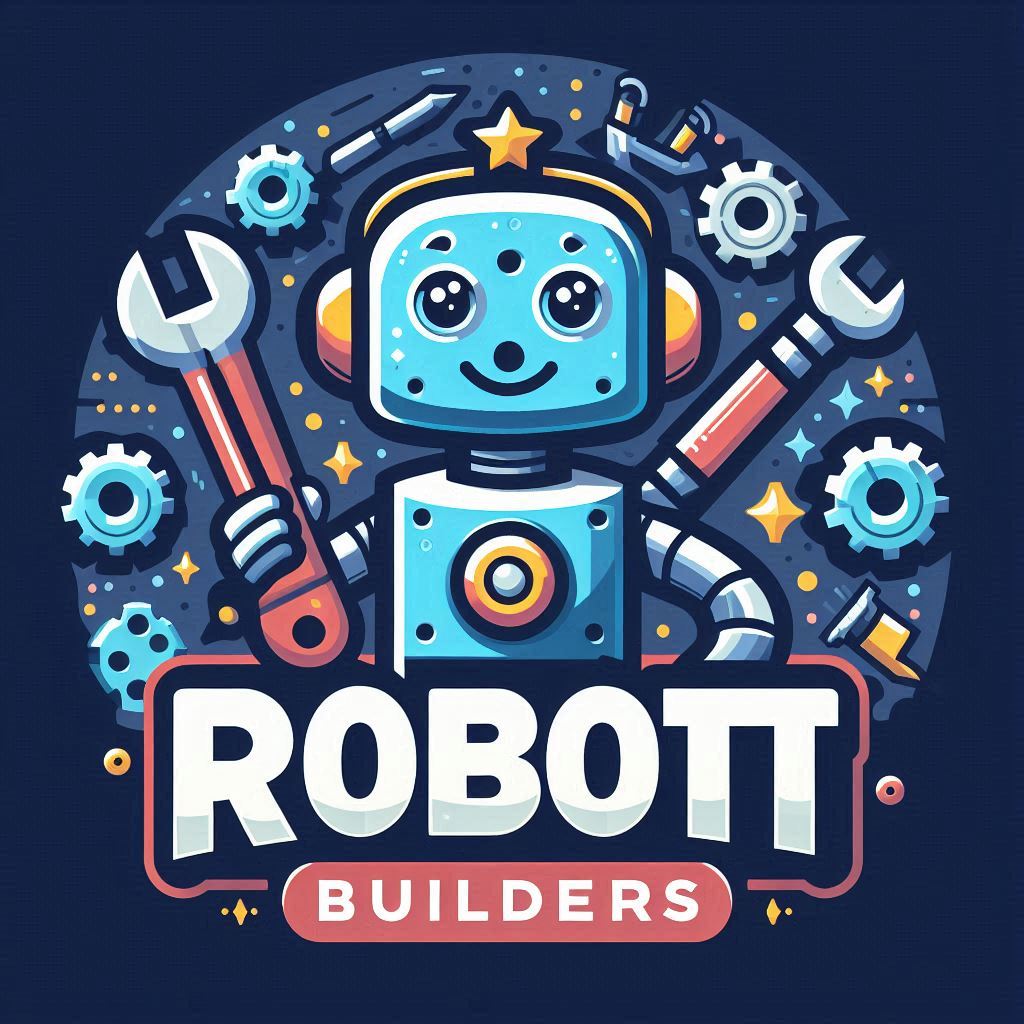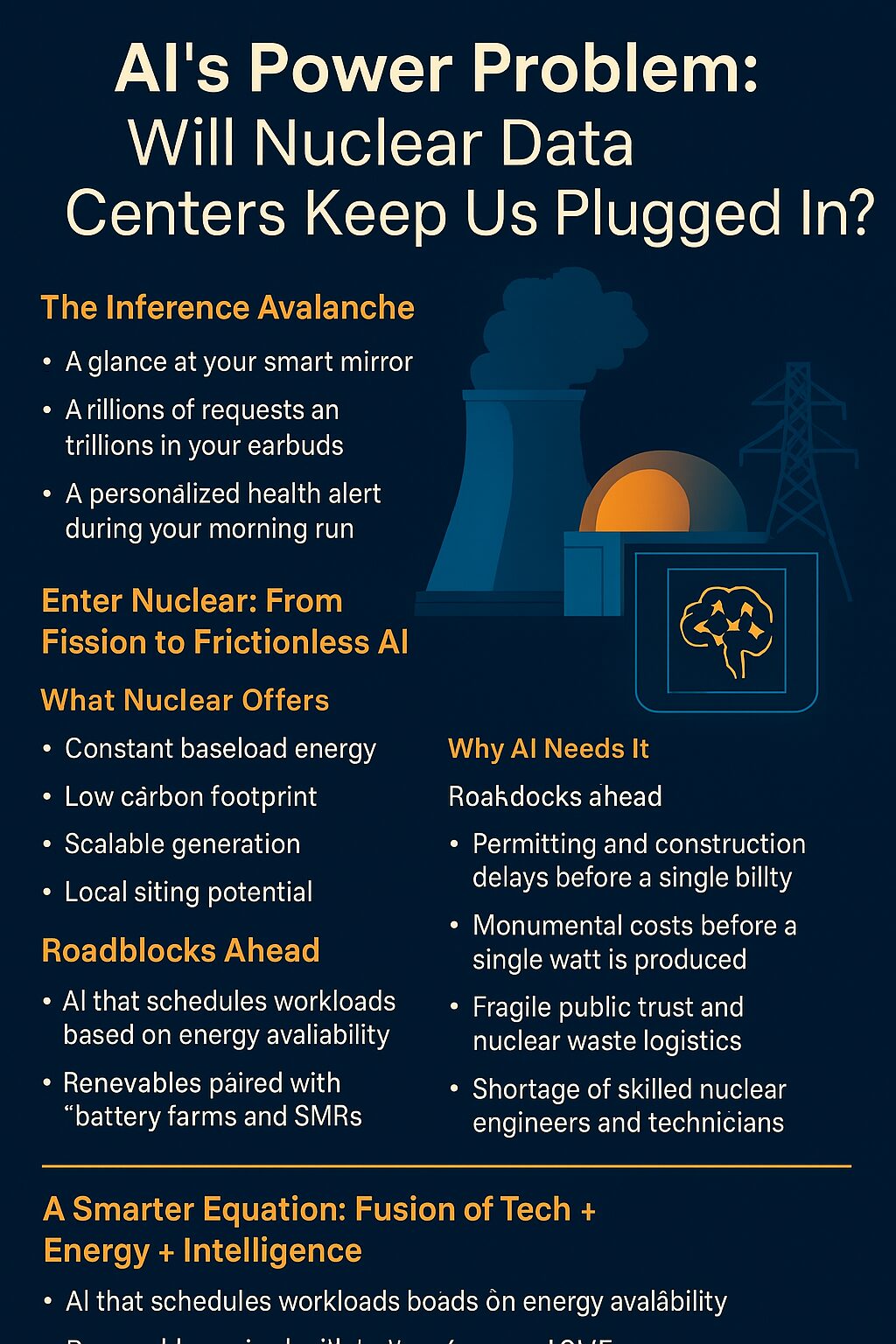Introduction
As artificial intelligence scales at breakneck speed, the energy demands of AI data centers are reaching unsustainable levels. In 2025, AI workloads—especially inference tasks—are pushing global electricity consumption to new highs. With traditional grids under pressure and renewable sources struggling to meet 24/7 demand, nuclear-powered data centers are emerging as a bold solution.
This article explores the energy crisis triggered by AI, the role of nuclear energy, and whether it can truly power the future of intelligent infrastructure.
🔋 The AI Energy Crunch: What’s Driving It?
AI data centers are consuming energy at 4x the rate of grid expansion. Key drivers include:
- 🧠 Inference Explosion: Billions of requests and trillions of tokens processed daily
- 🔁 GPU Power Surge: Nvidia’s GB200 racks draw up to 140 kW, with future designs reaching 600 kW
- 🏢 Data Center Expansion: Thousands of new centers projected by 2030
- 🌐 24/7 Availability: AI services require constant uptime and low latency
By 2030, data center power demand could grow by 160%, consuming up to 12% of total U.S. electricity.
☢️ Why Nuclear Energy Is Gaining Traction
| Advantage | Why It Matters for AI |
|---|---|
| Baseload Reliability | Delivers consistent power, unlike intermittent renewables |
| Low Carbon Emissions | Supports sustainability goals for Big Tech |
| Scalability | Can meet exponential growth in AI workloads |
| Siting Flexibility | Can be located near data centers to reduce transmission loss |
Big Tech firms like Google, Microsoft, and Amazon have signed nuclear power purchase agreements to secure clean, round-the-clock energy.
🏗️ Challenges of Nuclear-Powered Data Centers
Despite its promise, nuclear energy faces hurdles:
- 🕒 Long Build Times: New reactors can take 7–10 years to complete
- 💰 High Costs: Capital-intensive infrastructure and regulatory compliance
- ⚠️ Waste Management: Requires safe handling of radioactive materials
- 👷 Labor Shortage: Limited skilled workforce for nuclear deployment
Even with aggressive investment, only 10% of needed nuclear capacity may be available by 2030.
🔄 Hybrid Solutions: Nuclear + Renewables + AI Optimization
Experts suggest a multi-pronged approach:
- ⚡ Pair nuclear with battery storage and renewables for flexible load balancing
- 🧠 Use AI to optimize energy distribution, cooling, and workload scheduling
- 🏭 Explore Small Modular Reactors (SMRs) for faster deployment near data centers
This hybrid model could reduce emissions while meeting AI’s relentless energy appetite.
📈 SEO Tips for Content Creators Covering AI Energy
✅ Search-Friendly Titles
- “AI Energy Crisis: Nuclear Data Centers Explained”
- “Can Nuclear Power Sustain AI Growth?”
✅ High-Impact Keywords
- “AI data center energy consumption”
- “nuclear-powered data centers”
- “AI infrastructure sustainability”
✅ Metadata Optimization
- Alt Text: “Nuclear reactor powering AI data center”
- Tags: #AIInfrastructure #NuclearEnergy #DataCenterPower #CleanTech #AI2025
Conclusion
The AI revolution is rewriting the rules of energy consumption. While nuclear power offers a compelling path forward, it’s not a silver bullet. A mix of clean energy, smart infrastructure, and policy innovation will be needed to keep AI sustainable.
In the race to power intelligence, the question isn’t just how much energy we need—it’s where it will come from.

